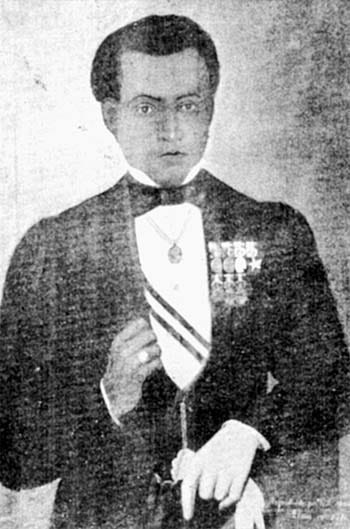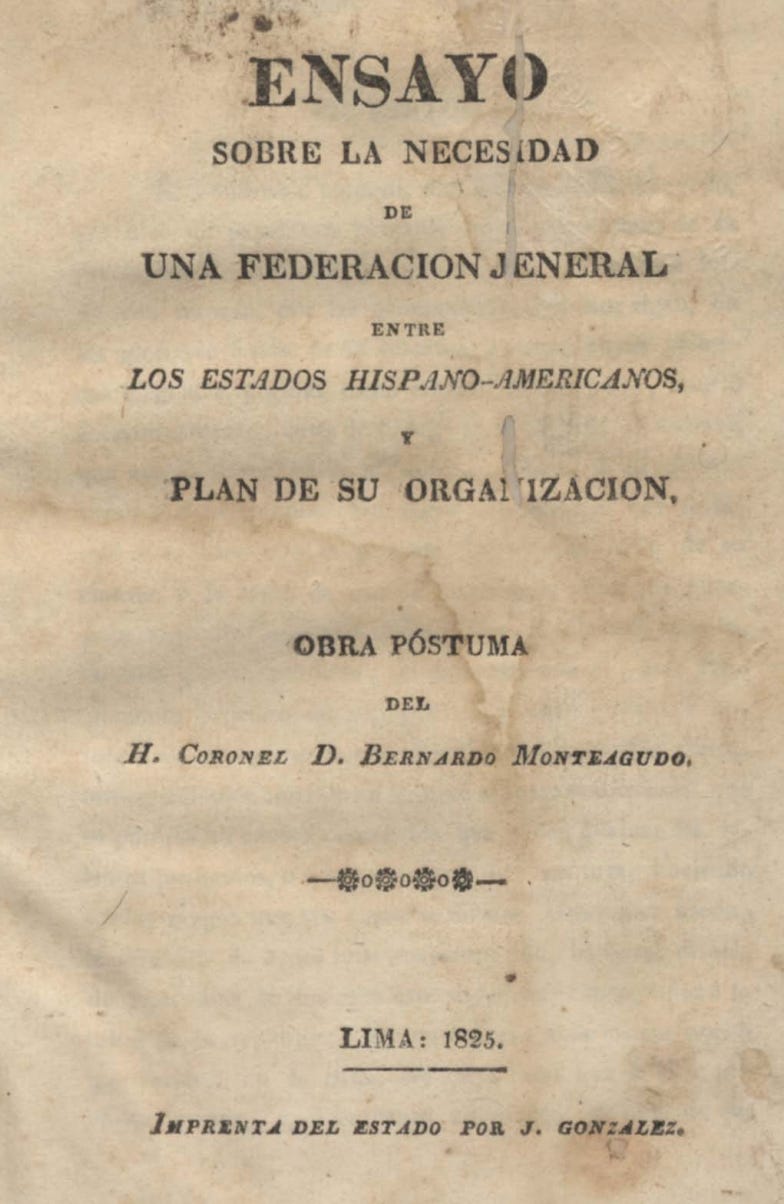Hola. This is Barbara, your guide to the latest cultural news from the Spanish-speaking world. To continue with this year's philological anniversaries, I have chosen a 200-year-old essay with the visionary title Ensayo sobre la necesidad de una federación general entre los estados hispanoamericanos, written by Bernardo de Monteagudo (1789–1825). What is the essay all about, and what is its relevance today?
The vague notion of Hispanic America
When I studied Spanish-American literature, I took the concept of a Hispanic America for granted. However, I had to learn that most people from the American nations who speak Spanish see this very differently. The idea of "Hispanic America" is something that many people outside the region are more familiar with than the people who live there. Most people from these countries first identify with their home country. It's often only after moving to places like the United States or Europe that they begin to recognise a shared Hispanic American identity. I've had this experience with friends from Argentina, Mexico, and Colombia. Many of them have told me that they only began to understand what it means to be part of Hispanic America after leaving their home countries. This personal experience is what led me to choose Monteagudo's essay on the importance of creating a federation of Spanish-American states shortly after the individual nations had gained independence, when I had to select texts that I wish would be discussed more.
Who was Bernardo de Monteagudo?
Bernardo de Monteagudo (1789–1825) was a prominent Argentine political leader, lawyer, journalist, military figure, and radical revolutionary who played a crucial role in the independence movements of South America, particularly in the regions of the Río de la Plata (modern Argentina and Uruguay), Chile, and Peru. He was probably of mixed race, even though the official historiography of the 19th century attempted to portray him as whiter than he probably was. As a consequence of his radicalism, Monteagudo was opposed by other independence leaders and was sent into exile several times. His uncompromising ideas also led to his premature death: He was assassinated at the age of 35 in Lima, the very same year his famous essay was published. Today, Monteagudo is honoured in Argentina and Peru as a key figure in the struggle for independence, even though his legacy remains complex due to his radicalism and the controversies surrounding his methods and authoritarian tendencies.

What is the key message of this important political document?
Bernardo de Monteagudo's essay argues for the urgent necessity of a federation of Spanish American states, envisioning a supranational union that would coordinate foreign policy and security among the newly independent nations of Hispanic America. Monteagudo's vision was not unique—other leaders, like Simón Bolívar, shared similar aspirations, seeing the unity of Spanish American states as essential to resisting recolonisation and foreign intervention. Moneagudo believed that only through such a federation, with a permanent congress of representatives from each country, could the liberty of the nascent republics be preserved and their independence safeguarded against external threats, particularly from European powers and neighbouring monarchies. He feared Spain’s revenge, which, after Napoleon’s defeat, had become a member of the Holy Alliance, aiming at maintaining the existing order against revolutionary and secular influences (p. 3 of the script that I used for preparing this newsletter). The young Brazilian Empire had also re-established monarchical rule in the Americas and, therefore, was considered an enemy of the other new nations (p. 5).
Monteagudo's federation would have involved:
A permanent congress of plenipotentiaries from each country (p. 5).
Coordination of foreign policy and collective security («la dirección en grande de la política interior y exterior», p. 6)
Balancing local independence with a binding supranational structure (p.7).
Monteagudo, thus, recognised the key challenges in establishing such a federation. His vision was unable to fully reconcile the competing desires for local autonomy and broader regional unity. Only one year after the essay was published, the Congress of Panama, called in by Simón Bolivar, failed to establish a league of united nations of Hispanic America.
What is its relevance today?
Monteagudo’s message remains relevant today for several reasons: Hispanic American states continue to face challenges—an unstable economic model based on extractivism, and transnational threats, like climate change or the drug cartels - that could be more effectively addressed through deeper regional cooperation. Organisations like MERCOSUR or the Organisation of American States (OAS) strive for cooperation but often fall short of the kind of binding federation that Monteagudo envisioned. The original impulse behind the federation—protecting the region from imperial domination—remains pertinent as Spanish America navigates complicated relationships with other global powers, such as the US or China, and seeks to assert its collective interests on the world stage.
As Paikin and Perrotta of the Universidad de Buenos Aires point out in their historical framing of Latin American integration:
Para Monteagudo hay tres ejes fundamentales: Paz, Independencia y Garantías recíprocas para el comercio. Paz, entre las naciones hermanas. Independencia, frente al imperio. Garantías recíprocas, como forma de facilitar el comercio interior y regular su desarrollo. De ellas, claramente hará eje en el problema de la Independencia entendida como la posibilidad de constituir en las nuevas naciones una vida autónoma frente al poderío imperial. (Paikín & Perrotta, Pensamiento latinoamericano para la integración, Crítica y Emancipación, vol. VIII, núm. 15, 2016, https://portal.amelica.org/ameli/journal/18/184003/html/)
Translation (with DeepL): For Monteagudo, there are three fundamental axes: Peace, Independence and reciprocal guarantees for trade. Peace between sister nations. Independence from the empire. Reciprocal guarantees as a way of facilitating internal trade and regulating its development. Of these, he will clearly focus on the problem of Independence, understood as the possibility of establishing an autonomous life in the new nations in the face of imperial power.
In summary, Monteagudo's essay highlights both the opportunities and difficulties of regional integration, offering a historical perspective that can inform current debates about the balance between national autonomy and collective action.
Where can I read the document?
For this post, I worked with a modern copy that is made available thanks to the Revista PPR (Periodismo por venir) in Argentina. You can also have a look at a digital copy of the first edition at the Instituto Riva-Agüero, a unit of the Escuela de Altos Estudios de la Pontificia Universidad Católica del Perú.
This is all for today. If you come across more recent analyses on Monteagudo and his relevance to integration in Hispanic resp. Latin America today, let me know. I will be happy to share them with all my readers. Thank you!



